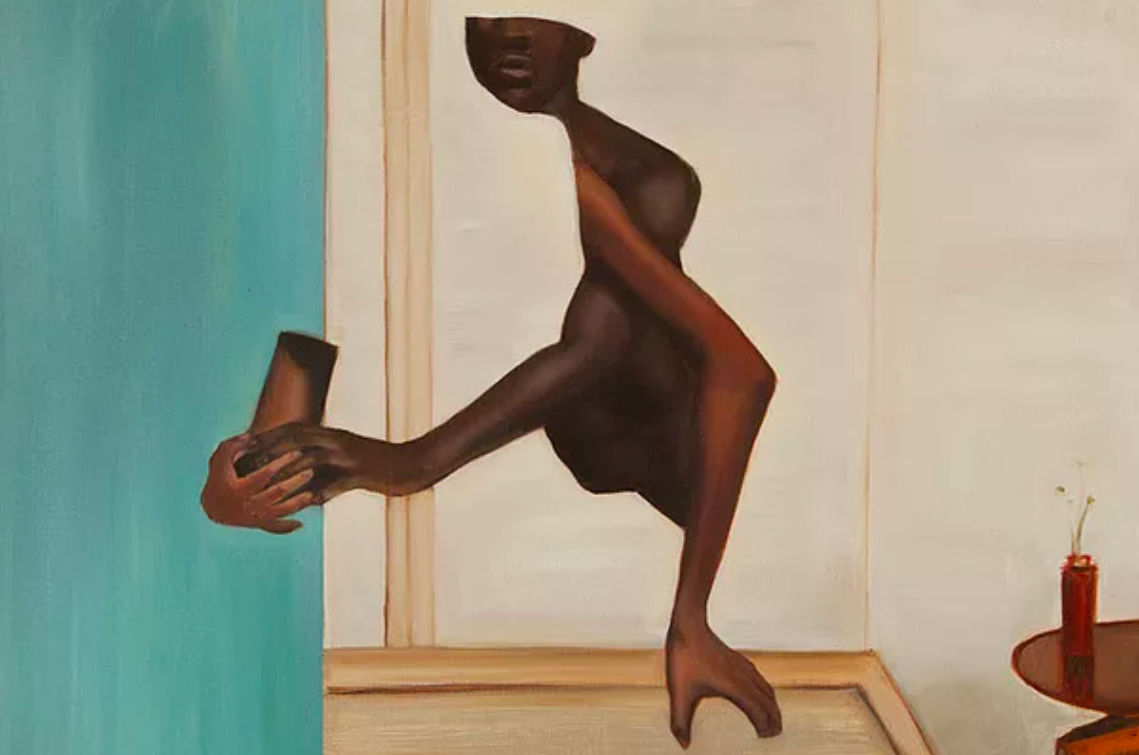Some of the most radical criticism coming out of the university today is the result of an interested desire to conserve the subject of Truth, or the Truth as Subject.
Readers of this introduction will likely recognize the epigraph above as a cheeky riff on a sentence that appears early in “Can the Subaltern Speak?,” Gayatri Chakravorty Spivak’s examination of desire, ideology, and historical narrative in the era of postcolonial, multinational capital. Although Tavia Nyong’o’s Afro-Fabulations: The Queer Drama of Black Life contains only a few references to that essay, we may nonetheless regard his recently published book as engaged with a set of concerns that resonate strongly with Spivak’s. Central to both texts is the effort to develop a critical account of the relations between representation and truth from within an encounter with archives that extinguish the lives of the people they document. In the face of the challenge Nyong’o’s and Spivak’s observations pose to the protocols of historical verification, we may spin out a series of questions that do not so much abandon as radically recast “truth” as the shared project of history and critical theory. What strategies of truth-telling are available in a period of intense representational anxiety, when demands for transparent and accessible portraits of minoritized life in the sphere of culture are counterweighted by widespread resignation to the reality that the proxies and levers of political and economic decision-making remain remote and opaque? If the anti-black, heteropatriachal order of the day subjects the subaltern to compulsory invisibility, then might the black queer performer—thrust in front of the recording apparatus that promises glamor and scrutiny in equal measures—gain more by fabulating instead? What else can the anti-racist, anti-homophobic intellectual do when they shrug off the burden of conserving the Truth as Subject?
Nyong’o’s book does not offer final answers to these questions so much as stages a series of challenges to the terms under which one might try to respond to them. At the center of Nyong’o’s challenges to the prevailing order of “truth” is his elaboration of afro-fabulation, a mutable term that serves multiple purposes as the book unfolds. On one hand, it encompasses the tactics that black performers deploy to carry out a “queer hack of the codes of an anti-black world,” while on the other, it propels a queer engagement with “the ways the study of blackness can rearrange our perceptions of chronology, time, and temporality” (4). Simultaneously adopting and adapting the philosophy of Henri Bergson, Nyong’o posits the fabulist as a producer of “‘images,’ immanent to the world within which they appear, rather than ‘representations’ reflecting—whether in accurate or stereotypical fashion—the world external to them” (80). The fabulist’s labor insists on the queer, revisionary potential of blackness as it erupts into appearance under conditions of negation. Fabulation is thus not a synonym for lying, storytelling, or fantasizing, although specific fabulative acts—whether embodied in gestures of critical shade, a performer’s alter-egos, or the remonstrations of a depressed cyborg—might make use of one or all of these strategies. Fabulation, as Nyong’o uses it, instead gestures toward the practical and theoretical effects of a mode of calculated fictionalizing in black art and performance. It presents, in a gesture at once fabulous and ambivalent, “the falsification of this ‘true’ order as a pathway toward its correction” (19). The very plasticity of the term afro-fabulation thus embodies one of the questions that propels the book’s engagement with the subject of black queer study: that is, how to speak to the fugitivity of black queer and trans life without in the process producing a new mode for that life’s capture?
As the eight chapters of Afro-Fabulations grapple with this final question, the book contributes to a growing body of work that renders black life, vitality, and beauty impossible to disentangle from feminist and queer theories of eroticism, care, and pleasure. Recent and forthcoming work by Jayna Brown, Malik Gaines, Saidiya Hartman, LaMonda Horton-Stallings, Kara Keeling, Keguro Macharia, Amber Jamilla Musser, and Christina Sharpe, to name just a few examples that Nyong’o also cites, have made what might be dubbed an anti-captivity imperative central to black queer study. Nyong’o’s contributions to this imperative are numerous, but one in particular—his invocations of the fabulist’s relation to “a people who are missing”—strikingly consolidates the book’s ethical and critical advancement of the critique of subalternity. On one hand, the phrase (adapted from a comment Gilles Deleuze makes in an interview) recalls the debates among feminist historians of slavery and colonialism about whether it is possible to separate the lives of “a people who are missing” from the administrative records and ledgers that make knowledge of their existence identical with the exercise of brutality. As Nyong’o extends the ethical imperative that drives this feminist historical research to black queer and trans archives from the twentieth century—indeed, each chapter engages performances through a performer’s more or less explicit relation to some people who are missing—he does not take this palpable absence as an occasion to speak in the place of this subaltern, but rather to understand how the performer’s negotiated, often hesitant, relation to this missing people makes possible their own fabulous arts. In this regard, the retrospective dimension of a missing people is bound up with the speculative claim that a people who are missing is also a people to come (82). If the fabulist often takes the form of a skilled, individual virtuoso (or critical theorist), then Nyong’o would also have his reader sense how even the solo fabulist necessarily works in the service of a black queer and trans collective lifeworld that exceeds (even as it supports) any of its singular embodiments. “If afro-fabulation entails an unexpected appearance,” as he puts it at one point, “then this appearance has everything to do with a mode of relating to hegemony and hegemonic visibility, which bears testimony to the ever-inventive resources of shady conviviality on the lower frequencies” (12).
The essays in this dossier follow Afro-Fabulations by observing how questions of aesthetics in black queer and trans archives intersect with philosophical and political interrogations of memory, diaspora, affect, temporality, capital, and the afterlife of slavery. Rather than render black queer art, expressive culture, and quotidian life as the raw materials for conceptual labor, these contributors, like Nyong’o, register how fabulative acts already reside in the queer ripostes that their examples deliver to the terms of an anti-black sociopolitical order.
The first two entries consider how Afro-Fabulations negotiates tensions of the present. Jayna Brown reflects on how Nyong’o’s commitment to forms of black queer liveliness in an apocalyptic world engage in a form of agonistic dialogue with recent mobilizations of negativity in black and queer studies. Leon Hilton explores how the book’s persistent deflection of the “photo-chromatics of racial meaning” might emerge in other spheres of artistic and political responsibility at a time when spectacles of black death and infrastructures of anti-black violence are fodder for museum displays and profits.
The entries by Sampada Aranke and Malik Gaines assess the descriptive, conceptual, and political maneuvers that thread their way through Afro-Fabulations as a text. Aranke’s essay evaluates the vexing status of appearance throughout the book and meditates on how it contributes to a line of black studies that dwells in the slide between dark and black. Gaines, on the other hand, identifies a strand of cinema studies in Afro-Fabulations and considers how it informs Nyong’o’s reparative approach to what is black in queer thought and queer in black thought.
The last two entries take Nyong’o’s work to black geographies and aesthetic forms that exceed his own case studies. Amber Jamilla Musser extends Nyong’o’s identification of a drive to the virtual in black art, life, and thought to the work of Leonardo Drew, whose sculptures of accumulated materials provide a queer sense of blackness, not by way of a representative image, but through the traces of Drew’s laborious processes of assemblage. Monica L. Miller broadens the geographical reach of Afro-Fabulations by diving into the uncomfortable middle of two performances of black life and death in Scandinavia, a region not often included in studies of black diaspora.
The cover image for this dossier is a still from Tourmaline’s Atlantic is a Sea of Bones (2017), a film about which Nyong’o has also written. Commissioned by Visual AIDS for its 28th annual Day With(Out) Art project, Atlantic follows the performer Egyptt Labeija as she sumptuously plunges through creative acts of memory that are set inside of loss without being reduced to the cinematic clichés of that register. In this still, the camera lingers on her hand, mid-gesture and half in shadow, as she run her fingers and palms over the surface of her ruffled blue dress. As Nyong’o also observes, Tourmaline’s film, which mixes the everyday documentary aesthetic of handheld phone cameras with the rich textures of queer experimental cinema, has already drawn the attention of its viewers to the work of hands before this moment.

When considering Egyptt Labeija’s hands, I am struck by the visual rhyme this moment shares with the cover of Afro-Fabulations, which features the painting Sometimes But Not Very Often (2016) by the artist Shannon Tamara Lewis. In a detail of this work, part of a series on the shapeshifter’s joyful possibilities of transformation and the harried burdens of constant adaptation, we find another set of hands set against another field of blue. It is impossible, likely even beside the point, to tell whether these hands are the pair of one person or that of multiple people: where they lace together, perhaps in thought, pleasure, or a bit of both, is where they become, as Nyong’o might put it, echoing José Esteban Muñoz, singular plural (59). The multiple and multiplying hands found across these images—the hand of the filmmaker and the performer, that of the painter and the shapeshifting subject—bring us to a place between representation and enactment, which might be another way of describing the place of afro-fabulation: that is, in the collaborative work of hands as they record, feel, and render black queer and trans lifeworlds against the conventions of representational capture.
Can, then, the subaltern fabulate? Like Spivak, I feel compelled to answer this question in the negative, if only to head off any assumption that a radical political guarantee can be won by affirming that individual subaltern peoples can and do. But I also would suggest that the value of this question, when staged through the anti-captivity imperative that orients Afro-Fabulations, resides not in the answer itself but in the struggle to develop an answer at all. In that regard, one of the things these contributions register and reflect is Nyong’o’s commitment to tarrying with, not the negative, exactly, but the muddled middle of black queer and trans archives, where people twist the command to never appear at all or to only appear as disciplined, compliant, and ready to be consumed, and do so in fabulously, unexpectedly queer ways.
Cover image: A detail from Shannon Tamara Lewis’s Sometimes But Not Very Often (2016). Oil on canvas, 60 x 60 cm. From the series “Shapeshifters and Other Flows.”


